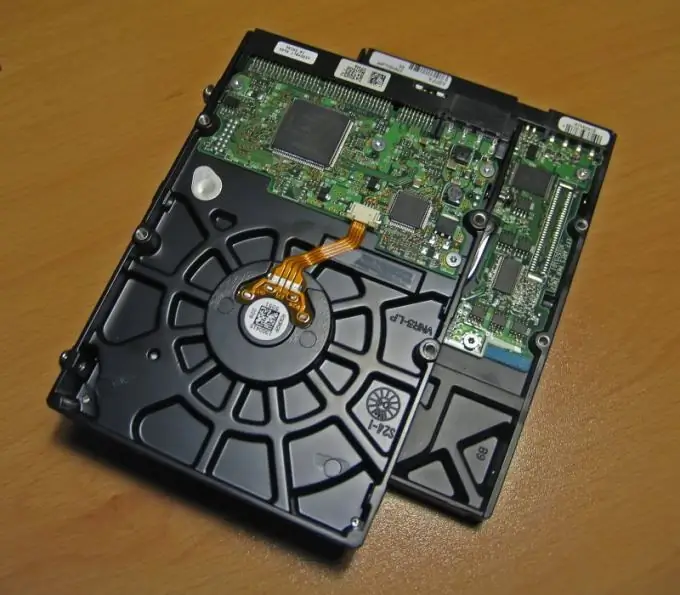Optical drives and hard drives can operate in one of three modes: "Master", "Slave" and "Cable select". If on the first to select the mode it is necessary to rearrange only one jumper, then on the second - often two or three. SATA drives also have jumpers, but they are different.

Instructions
Step 1
If the drive is installed in a computer, before changing any jumpers on it, shut down the operating system, turn off the computer power, remove the ribbon cable and power cable from the hard drive, remembering their positions, and then remove the drive itself (without this you will not see the sticker on it).
Step 2
Check the images on the sticker. If you have an IDE hard drive, this sticker usually shows three jumper locations: for "Master", "Slave" and "Cable select" modes. Sometimes there is also a fourth figure showing how to put jumpers in order to artificially reduce the volume of the drive to 32 gigabytes (this is sometimes necessary to work with old motherboards). In the Linux operating system, this mode is usually not required even with such cards, since this operating system works directly with hard drives.
Step 3
Find the jumpers themselves on the same side wall as the connectors. You can determine where the top of the field for installing jumpers is by using the landmarks, which are usually also shown in the figure. Such a reference could be, for example, a missing pin.
Step 4
Move the jumpers themselves with miniature pliers. Sometimes one drive setup option requires fewer jumpers than another. Therefore, if you have any extra jumpers left, save them, as you may need to put everything back in the future.
Step 5
In very rare cases, the drive does not have an illustration sticker. When you find yourself in such a situation, report the drive model to the forum where hard drive repair specialists communicate. Ask them for a diagram of the location of the jumpers on the actuator of this model.
Step 6
When there are two devices on the same loop (it does not matter, hard drives or optical drives), you should either select the "Master" mode on one of them, and "Slave" on the other, or select the "Cable select" mode on both of them.
Step 7
SATA drives have no "Master" and "Slave" modes. Their jumpers are intended for other purposes. The most common jumpers are to reduce the data exchange rate from 3 to 1.5 gigabits per second. They are designed to make the hard drive compatible with older motherboards. Sometimes there are jumpers that control the power saving mode. Their purpose is almost always indicated on the drive sticker.
Step 8
After changing the position of the jumpers, place the drive in place with the board facing down, secure it, then connect the cables in the same way as they were connected earlier. Turn on the computer and make sure all drives are functional.






